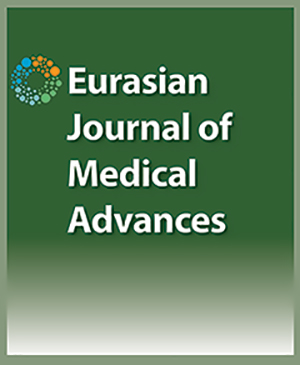

Retrospective Evaluation of the Effect of NT Thickness and Septation on Karyotype Anomalies in Cystic Hygroma Patients
Ugurkan Erkayiran1, Bulent Kostu1, Salih Serin2, Alev Ozer31Department of Obstetrics and Gynecology, Kahramanmaras Sutcu Imam University, Kahramanmaras, Turkey, 2Department of Obstetrics and Gynecology, Tatvan Can Hospital, Bitlis, Turkey, 3Department of Obstetrics and Gynecology, Kahramanmaras Devakent Hospital, Kahramanmaras, Turkey,
Objectives: This study was planned to observe the effect of septation and nuchal translucency (NT) on the outcomes of karyotype analysis in cystic hygroma (CH) patients. Methods: Between 2010 and 2014, 84 patients who were suspected to have elevated NT thickness (>3 mm) or CH were included in this study and were retrospectively investigated. Patients were evaluated in two different categories that were divided into four groups: 1) those with NT thickness between 3 and 5 mm (n=47), 2) those with NT thickness >5 mm (n=37), 3) those with cystic septation (n=43), and 4) those without septation (n=41). Results: The rate of aneuploidy was found to be 36.1% in CH patients with NT thickness of 3–5 mm, whereas this rate was found to be 56% in CH patients with NT thickness >5 mm. In the statistical comparison of these two groups, NT thickness >5 mm increased the aneuploidy risk, but it was not statistically significant (P=0.232). The aneuploidy rate was found to be 79% in CH patients with septation, whereas it was 9.7% in CH patients without septation. On statistical comparison of CH groups with and without septation, it was observed that CH septation was statistically significant in terms of karyotype anomaly (P=0.021). Conclusion: As a result of aneuploidy in the absence of NT thickness ≥5 mm are not found to be statistically significant increased risk, the risk of aneuploidy septal cysts were found to be statistically increase. Further studies are required to explain this.
Cite This Article
Erkayiran U, Kostu B, Serin S, Ozer A. Retrospective Evaluation of the Effect of NT Thickness and Septation on Karyotype Anomalies in Cystic Hygroma Patients. EJMO. 2018; 2(1): 8-12
Corresponding Author: Ugurkan Erkayiran



